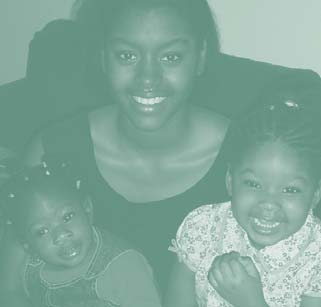Letting Youth Make the Choices
 |
| Seventy-five percent of Lifeworks’ teen parents graduate from, remain in, or return to school. |
Within the last 10 years, researchers and policymakers have learned that key elements of successful youth development include providing youth with caring adults, safe places, marketable skills, and opportunities to serve. With this understanding, the term Positive Youth Development was coined. This approach recognizes that empowered young people need support, guidance, and opportunities during adolescence. Positive Youth Development emphasizes youth creating their own future goals and plans and implementing them with the support of caring adults.
Youth workers can use the Positive Youth Development approach in arranging aftercare by encouraging youth to develop their own plans as soon as they begin a program and to build their own connections to their community through community service, community mapping, or cultural activities. According to data from the Runaway and Homeless Youth Management Information System (RHYMIS), youth in basic center programs who participate in community service are more likely to have a safe exit—an exit to a home or shelter rather than back to the street or to an unknown location.
"Opportunities to participate in an acting troupe, sports team, or artistic endeavors attract and retain youth because they build on their strengths and interests," states an October 2005 research and policy report from the National Conference of State Legislatures, entitled Strengthening Youth Policy. "They provide them with an opportunity to develop deep relationships that can change their lives." Programs that focus solely on fixing or preventing problems often have little appeal to young people, according to the report.
 |
| At Lifeworks, youth decide on their aftercareplan as soon as they enter one of the programs. |
At Lifeworks youth decide on their aftercare plan as soon as they enter one of the programs. Director Steve Bewsey offers ways that their program has created a Positive Youth Development approach to aftercare:
- Youth choose counselors or therapists from different people in the community employed by Lifeworks and decide where they want to meet with the counselor—for example, in their own apartments or in group facilities. "It's to let them feel a little control in establishing these relationships. When they have more control they are more interested, it seems, in having those kinds of relationships," says Bewsey.
- When youth come to the emergency shelter, staff ask, "What can we do for you?" Bewsey explains. "This is about forming a relationship based on what they want, not what we want."
- Staff encourage youth to establish relationships with people in the community as much as possible. "Why pay my staff to take youth out to the movies? I am more interested in them going to the movies with other people they are going to be with in the community," Bewsey says. "I will pay them to take their neighbor to the movies."
- A resource center at Lifeworks helps youth who need additional services. "We have immediate access to all of their information that they had with us. I had a 28-year-old call and I was able to say, 'Come over to the resource center and we can go back and look and see examples of how you solved these problems before—how you got rent paid, how you used this service to get utility money,'" Bewsey recalls.
- Lifeworks has a long-term goal of making it possible for youth to access important personal records, such as birth certificates and social security cards, online.
- Lifeworks provides opportunities for graduates to come back and share life lessons with current program participants.


 Sign up
Sign up Follow us
Follow us Like us
Like us Sign up for our RSS feeds:
Sign up for our RSS feeds: 

